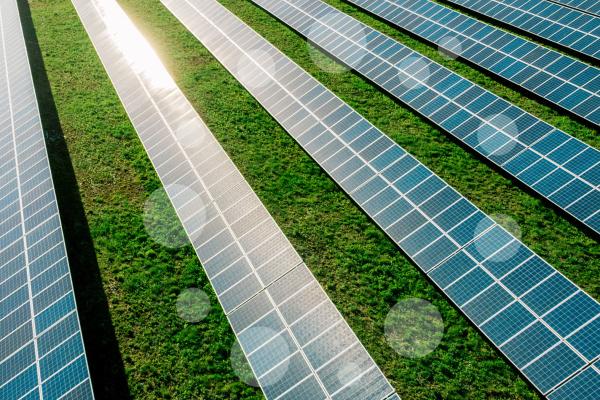The EU is the first trader in agricultural products of the world, both in terms of exports and imports. Agricultural trade helps to answer possible food production shortages due to climatic or other reasons. Ultimately, it contributes to the prosperity of farmers, industries and consumers. In recent years, global agriculture markets faced an increased volatility, directly impacting stakeholders of the food chain. Price volatility makes planning for farmers and buyers the world over extremely difficult and may result in political unrest, like in the recent food prices peak in 2007-2008.
The dynamic development of agricultural markets requires permanent monitoring and prospective analysis. Economic models have become indispensable tools in preparing and negotiating policy decisions like trade multi- or bilateral negotiations. The JRC also contributes to an annual exercise of medium-term outlook with the prospects for agricultural markets and income for the next decade. Furthermore, the development of the food supply chain in Europe is investigated, in general concerning the bio-economy or for certain high value added niche products.
Agricultural markets outlook for the EU
The market outlook consists of prospects for EU agricultural markets and income at medium term (10 years) elaborated on the basis of specific assumptions regarding macroeconomic conditions, policy environment, weather conditions and international market developments.
Agricultural market developments are at the heart of policy debates, particularly since the increasing food prices and short term price fluctuations of commodity prices. The annual outlook exercise provides a projection for the major EU agricultural commodity markets and agricultural income for the coming ten years ('baseline') which permits a better understanding of the markets and their dynamics and also contributes to identify key issues for market and policy developments. Furthermore, it serves as a benchmark for assessing the medium-term impact of future market and policy issues.
The outlook for EU agricultural markets and income is based on a specific set of assumptions regarding the future economic, market and policy environment. The baseline assumes normal weather conditions, steady yield trends and no disruptions caused by factors like animal disease outbreaks or food safety issues. The projections are not intended as a forecast of future outcomes, but instead as a description of what may happen given a specific set of assumptions and circumstances, which at the time of making the projections were judged plausible.
The JRC is deeply involved in this exercise under the responsibility of the Directorate-General for Agriculture and Rural Development. The JRC prepares the baseline on the base of a modelling approach relying on agro-economic models that represent the state of the art as well as attempts to identify and quantify the main areas of uncertainty and assess several scenarios. The JRC also organises an external review of the baseline and uncertainty scenarios in a workshop held every October in Brussels, gathering high-level policy makers, modelling and market experts from the EU, third countries and international organisations.
International Trade Negotiations
EU agriculture is interrelated through trade with agriculture in the rest of the world: associated and neighbouring countries, main competitors, developing countries, etc. Changes in the EU trade policy, in particular following multilateral or bilateral trade negotiations, have an impact on EU agriculture which needs to be assessed.
Trade negotiations, multilateral within the WTO (Uruguay Round concluded in 1995, Doha Round of negotiations launched in 2001, still not concluded), regional (e.g. Economic Partnerships Agreements with developing countries, Mercosur) or bilateral (partnerships with neighbouring countries, negotiations with other trade partners such as the United States of America or Japan, etc.) comprise agriculture-specific agreements, the impacts of which on EU agriculture (and the partners' one) are significant.
The JRC is involved is the impact assessment of potential trade agreements with partners (several hypothetical possible agreements), through economic modelling, both global CGE models assessing the economy-wide impacts of the trade policy changes involving all sectors of the partners and global partial equilibrium models simulating only the impacts incurred by the agricultural sectors of the partners. Simulations aims at showing which sectors and/or EU regions benefit from a potential trade agreement and which one on the contrary bear economic losses and adjustment pressures, compared to a 'baseline' situation.
Price volatility
Price volatility in the food supply chain threatens the long term competitiveness of agriculture. Therefore it is important to understand it and to identify the drivers and factors causing markets volatility.
Agricultural commodities prices reached unprecedented levels in 2007-2008. The rise of price levels and of their volatility added to insecurity and fears in national and international markets. It led to political discontent in several parts of the world, in a context of rising population to feed, constrained resources (water, soil, energy) and higher involvement of 'speculative capital' in commodity markets causing the number of futures and options traded globally on commodity exchanges to increase by more than five times between 2002 and 2008 as stated by the UN Special Rapporteur on the Right to Food, Olivier De Schutter.
Price volatility continued to express itself after 2008 and 2011-12 saw comparable high levels of prices. The JRC is involved in establishing projections in order to assess the likelihood of more volatile markets, establishing a theoretical model of storage of agricultural commodities (with a view to assess the consequences of public intervention policies) and studying the drivers and factors of food prices volatility.
Specific high value-added and quality food supply chains
Beside commodity trade, markets for higher value added agricultural and food products are developing in the EU, such as those covered by EU quality labels (organic production, geographical indications, products of mountain farming) and others (non-GM products, etc.).
The EU food supply chain is getting more and more complex and sees the development of specific chains for higher value added or specific products, often certified by a third party, in order to accommodate specific demands by consumers. The EU food market is characterised by a proliferation of such initiatives in the two last decades, which created an increased regulatory activity at EU, national, regional and professional level. The JRC is involved in the assessment of benefits and costs of such specific supply chains, and the labelling attached to them, for the different stakeholders involved (producers, processors, retailers, consumers, etc.) in the different functional (Non GM, Mountain products) or organisational aspects (e.g. short chains) of such supply chains.
Bioeconomy observatory
In addition to the traditional agri-food sectors, biotechnologies imply that more economical activities are interlinked and dependent from natural resources, under the new concept of 'Bio-Economy', the importance of which needs to be better monitored.
The approach to production, consumption, processing, storage, recycling and disposal of biological resources needs to be changed in order to face an increased demographical pressure and the non-sustainable current use of natural resources.
The Bioeconomy should allow an improved management of renewable biological resources, a reduced dependency on fossil fuels resources, opening new and diversified markets in food and bio-based products from many other industrial activities. In this framework, the JRC is setting up a bioeconomy observatory aiming at following the evolution of markets of bio-based products, providing data on the size of the bioeconomy and its constituent sectors as well of policies related to the bioeconomyand mapping EU, national and regional bioeconomy policies, research and innovation capacities and the scale of related public and private investments. Such observatory will help monitor the implementation of the strategy for bioeconomy strategy, one of the operational proposals under the Innovation Union and Resource–efficient Europe flagships of the Europe 2020 strategy.

Combine harvester in a field of grain
Agricultural markets and international trade


